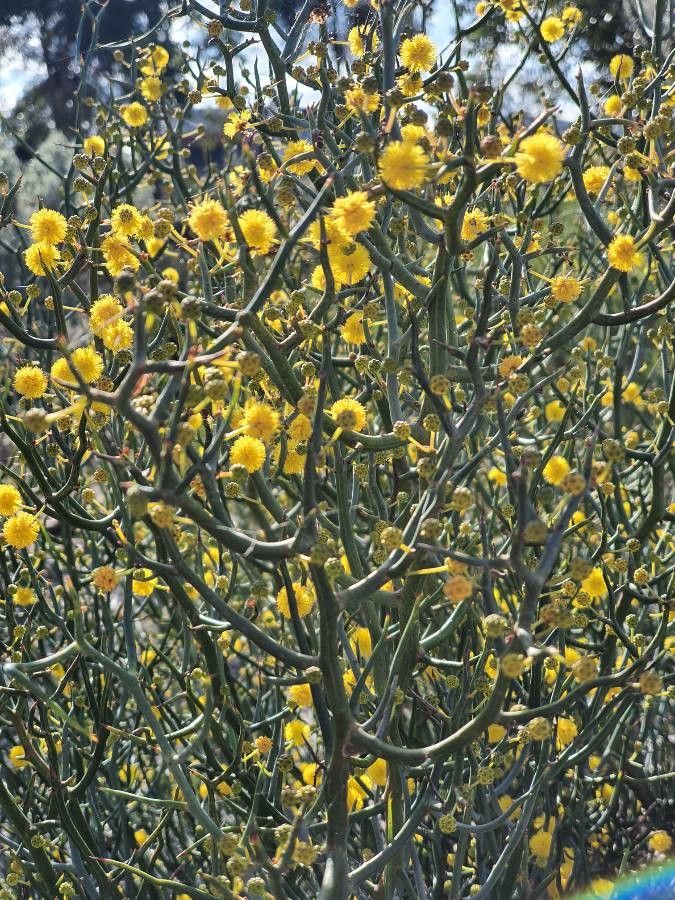Propagating the Needle Bush: A Guide to Cultivating Acacia aphylla
Introduction:
Acacia aphylla, commonly known as the Needle Bush or Leafless Wattle, is a striking, drought-tolerant shrub prized for its elegant, phyllode-bearing branches that resemble delicate, grey-green needles. Its unique appearance and resilience make it a popular choice among gardeners seeking low-maintenance, visually interesting additions to their landscapes, particularly in arid and semi-arid regions. However, propagating Acacia aphylla can present certain challenges, demanding patience and a degree of horticultural expertise. The plant’s relatively slow growth adds to the complexity of its propagation, making success all the more rewarding. Unlike many Acacias, its seed germination rate presents particular difficulties, making other methods more often utilized.
Seed Germination:
Currently, there are no known reliable methods for seed germination propagation of Acacia aphylla. While seeds may be produced, the germination rate is extremely low, and even with pre-treatment techniques like scarification or stratification, success remains elusive. This likely stems from the plant’s unique adaptations to harsh environments, leading to a recalcitrant seed type.
Cuttings:
Cuttings offer a more viable, albeit still challenging, method of propagation for Acacia aphylla.
Challenges: Success with cuttings depends heavily on timing and technique. The low success rate is likely due to the plant’s slow growth and potential susceptibility to fungal infections within the cutting.
Practical Tips: Hardwood cuttings taken in late autumn or winter, from mature but not overly old growth, are recommended. Cuttings should be approximately 10-15cm long, with a slightly angled cut at the base to aid water uptake. The use of a rooting hormone can significantly improve chances of success. Plant the cuttings in a well-draining, sandy mix and maintain a consistently moist (but not soggy) environment, ideally under a humidity dome or propagation tray. A bottom heat element can also be beneficial.
Rewards: Successful propagation from cuttings guarantees a genetically identical clone of the parent plant, preserving desirable traits. This method is particularly suitable for smaller-scale propagation efforts and allows for faster establishment compared to seeding.
Division:
Division is generally not a practical method for propagating Acacia aphylla. The plant’s root system is not easily divided, and the likelihood of success is very low. Severe disruption to the root system often leads to plant death or prolonged stress and stunted growth.
Tissue Culture:
Tissue culture presents a promising albeit complex and specialized method for propagating Acacia aphylla.
Challenges: Establishing aseptic conditions and identifying suitable media and growth regulators for successful shoot proliferation and rooting are crucial yet demanding tasks. This method requires specialized laboratory equipment and expertise.
Practical Tips: Employ sterile techniques throughout the entire process. Experimenting with different media compositions, including hormonal balances such as auxins and cytokinins, is critical for optimizing shoot multiplication and root development.
Rewards: Tissue culture enables rapid propagation of large numbers of genetically identical plants within a controlled environment which reduces the risk of disease, ultimately providing the potential for large-scale production.
Conclusion:
Propagating Acacia aphylla, in spite of its overall challenges, yields a unique sense of accomplishment. While seed germination is currently unreliable, cuttings provide a moderately accessible method with a reasonable chance of success given proper care and attention to detail; tissue culture stands as a highly effective yet specialized solution for larger-scale propagation. The slow growth and potential difficulties should not dissuade aspiring propagators. The exquisite beauty and hardiness of the Needle Bush, coupled with the satisfaction of overcoming the propagation challenges, makes the endeavor particularly rewarding. Remember patience and persistence are your greatest allies. Careful attention to hygiene and appropriate environmental conditions are key to success with cuttings, and those with access to tissue culture facilities will find it particularly effective. The reward – a flourishing Acacia aphylla in your garden – is well worth the effort.


